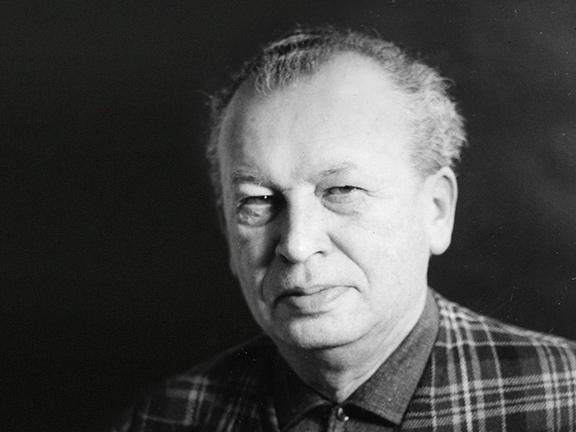
Arno Malinowski
Share
Arno Malinowski (1899 - 1976) was one of the most versatile designers who ever worked for the Georg Jensen Silversmithy. He was successful not only as a designer of silver objects, but also as a sculptor, ceramist, engraver and medalist.
Malinowski received training at the Royal Danish Academy of Fine Arts, School of Sculpture, Copenhagen, from 1919 to 1922. He was associated with the Royal Danish Porcelain Manufactory from 1921 to 1935, where he designed a series of statuettes depicting mythological characters and, after 1930, stoneware with celadon and oxblood glazes.
For a number of years, he also worked as a medalist, executing detailed designs for small bronze medallions. He was associated with the Jensen Silversmithy for many years; from 1936 to 1944, and again from 1949 to 1965. Malinowski’s work for the Jensen Silversmithy includes designs for jewelry and holloware. His jewelry designs are particularly distinctive and easily recognized.
Typically, they are well-balanced compositions depicting stylized animals rendered in exquisite detail, which are given greater presence through a sophisticated use of negative space. Familiar examples of this are the “kneeling deer” brooch (number 256) and the two-dolphin brooch (number 251). Another important example of Malinowski’s jewelry is the Kogemaerket (symbol for King), a silver and enamel brooch or lapel pin commemorating the seventieth birthday, in 1940, of the King of Denmark, Christian X. These brooches and pins were produced in great numbers and worn by Danes as a symbol of their loyalty to their nation and their resistance to the German occupation. Malinowski also created holloware designs for the Jensen Silversmithy. Many of these designs incorporate the forms of stylized animals which resemble those used in his jewelry. Malinowski participated in many exhibitions and won numerous awards for his work as a designer in silver, porcelain and bronze. He received a silver medal at the Paris World Exhibition (1925), the Eckersberg Medal (1933) and the Carlson Prize (1936).
Shop our collection of Arno Malinowski here
Excerpt from Georg Jensen Holloware, The Silver Fund Collection.
